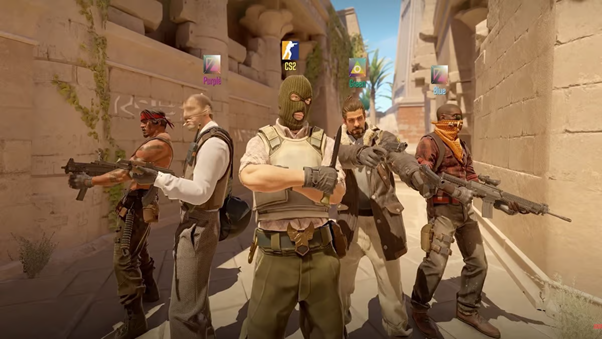Bully Tee Blog
Your go-to source for everything related to bullies and tee culture.
Sync or Swim: Navigating CS2 Team Coordination Like a Pro
Master CS2 team coordination with expert tips and strategies. Dive in and learn how to sync up for victory and outplay your opponents!
Top 5 Strategies for Effective Team Communication in CS2
Effective team communication is crucial for achieving success in Counter-Strike 2 (CS2). One of the most effective strategies is establishing clear communication protocols. Ensure that all team members are aware of their roles and responsibilities, and utilize tools such as Discord or in-game voice chat to facilitate real-time discussions. Regular team meetings can also help address any concerns and align objectives among members. By creating a structured approach to communication, teams can significantly enhance their gameplay strategies and coordination during matches.
Another vital strategy is to encourage open feedback among team members. Constructive criticism can lead to improvement and growth, helping players refine their skills. Implementing a routine where players can share their thoughts and suggestions fosters an environment of trust and collaboration. Furthermore, utilizing post-game analysis sessions allows teams to review their performance collectively and identify areas for improvement. By prioritizing open communication, teams in CS2 can not only strengthen their gameplay but also develop a strong sense of camaraderie.

Counter-Strike is a highly competitive first-person shooter game that has evolved over the years, captivating millions of players worldwide. One of the thrilling aspects of the game is the relegation match cs2, which showcases the intensity and skill required to succeed in high-stakes tournaments.
Common Mistakes in Team Coordination and How to Avoid Them
Effective team coordination is vital for achieving project goals, yet many teams fall into common pitfalls that hinder their performance. One prevalent mistake is the lack of clear communication among team members. When communication is unclear, misunderstandings can arise, leading to duplicated efforts or important tasks falling through the cracks. To mitigate this, establish regular check-ins and utilize project management tools that allow for transparent updates and feedback, ensuring everyone is on the same page.
Another frequent error is not defining roles and responsibilities clearly within the team. Teams often suffer from role ambiguity, where team members are unsure of their specific duties, which can result in friction and decreased productivity. To avoid this, implement a clear structure by outlining each member's responsibilities at the project outset. Consider using an RACI matrix (Responsible, Accountable, Consulted, and Informed) to clarify accountability and promote smoother collaboration.
How to Build Trust and Synergy Among Your CS2 Team Members
Building trust and synergy among your CS2 team members is crucial for fostering a collaborative environment that enhances productivity and morale. One effective method to achieve this is through regular team-building exercises that encourage open communication and collaboration. Activities such as brainstorming sessions, where team members can share ideas without fear of criticism, or problem-solving challenges that require teamwork, can significantly enhance interpersonal relationships.
Additionally, creating an atmosphere of transparency where team members are encouraged to voice their opinions and concerns can help in building trust. Leaders can set the tone by being approachable and receptive to feedback.
Another way to cultivate trust is to establish clear roles and responsibilities within the team. When each member understands their contribution to the team's goals, it fosters accountability and reliability. You might consider implementing weekly check-ins to review progress, celebrate achievements, and address any challenges that arise. This regular interaction allows team members to bond over shared goals and reflect on their achievements together, further enhancing synergy. Remember, trust is not built overnight; it requires consistent effort and positive reinforcement at all levels of the team.